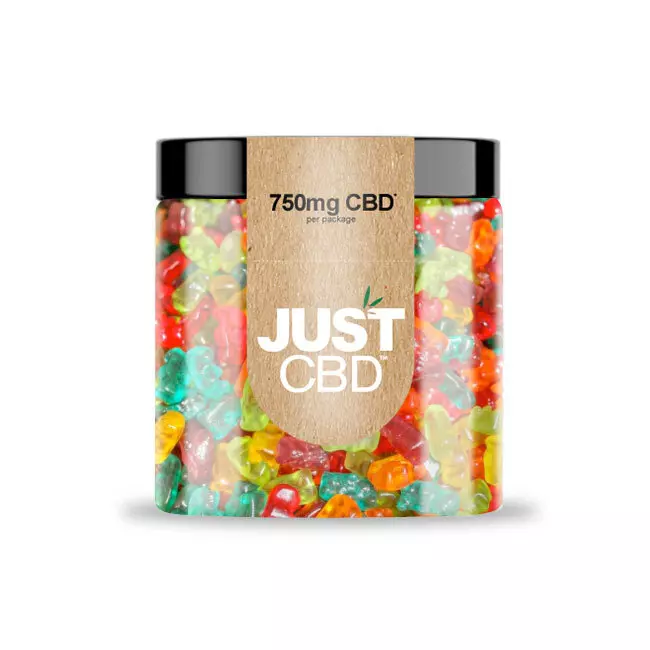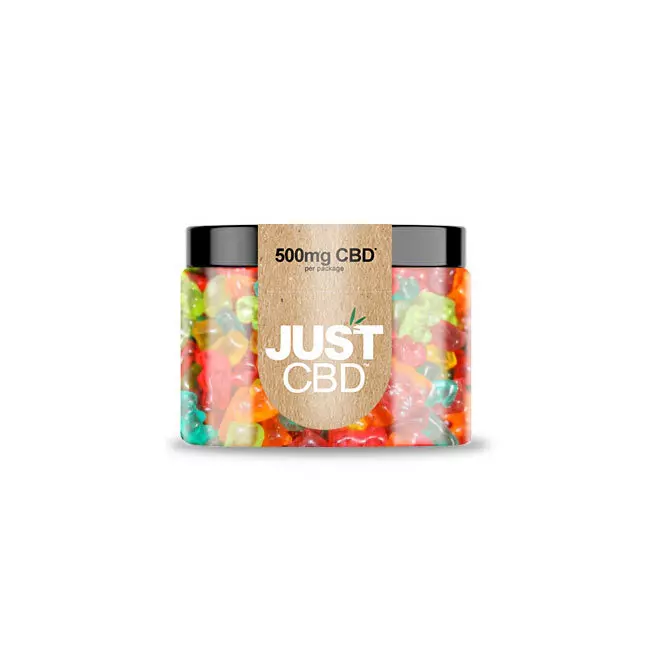The Endocannabinoid System (ECS)
The Endocannabinoid System (ECS) is a complex network of receptors and neurotransmitters found throughout the body. It plays a crucial role in regulating a wide range of physiological processes, including sleep, mood, appetite, inflammation, and pain perception.
What is the ECS?
The Endocannabinoid System (ECS) is a complex network of receptors and neurotransmitters found throughout the body. It acts as a communication system, helping to maintain balance and homeostasis within various bodily functions.
How the ECS Regulates Pain
Understanding how CBD gummies work to relieve pain naturally starts with understanding the endocannabinoid system (ECS). The ECS is a complex network of receptors and neurotransmitters found throughout the body. It acts as a communication system, helping to maintain balance and homeostasis within various bodily functions.
The ECS plays a crucial role in regulating pain perception. It does this through two primary types of receptors: CB1 and CB2.
- CB1 receptors are mainly found in the brain and central nervous system, where they influence mood, cognition, and pain processing.
- CB2 receptors are more prevalent in the immune system and peripheral tissues, playing a role in inflammation and pain signaling.
When you experience pain, your body releases endocannabinoids, which are natural molecules that bind to these receptors. This interaction helps modulate pain signals and reduce inflammation.
CBD and its Interaction with the ECS
CBD, short for cannabidiol, is a naturally occurring compound found in the cannabis plant. It interacts with the body’s endocannabinoid system (ECS), a complex network of receptors and neurotransmitters involved in regulating various physiological processes, including pain perception.
CBD’s Mechanism of Action
CBD does not directly activate CB1 or CB2 receptors like THC does. Instead, it exerts its effects through a more indirect mechanism known as allosteric modulation.
- CBD can bind to various proteins and enzymes associated with the ECS, influencing their activity.
- This modulation can indirectly affect endocannabinoid levels and receptor signaling, ultimately contributing to its pain-relieving effects.
For example, CBD may inhibit enzymes responsible for breaking down endocannabinoids, leading to increased endocannabinoid levels and prolonged receptor activation.
Different Types of Cannabinoids
CBD’s interaction with the ECS is complex and multifaceted. It doesn’t directly bind to CB1 or CB2 receptors like THC, but rather influences their activity through indirect mechanisms.
One way CBD exerts its effects is by modulating the enzymes responsible for breaking down endocannabinoids. By inhibiting these enzymes, CBD increases the levels of naturally occurring endocannabinoids in the body, prolonging their interaction with receptors and potentially enhancing pain relief.
Beyond direct modulation of enzymes, CBD interacts with a variety of other proteins and receptors within the ECS, further contributing to its overall effects.
The world of cannabinoids extends far beyond CBD and THC. There are over 100 different types of cannabinoids found in the cannabis plant, each with its own unique chemical structure and potential therapeutic properties.
Some notable cannabinoids include:
- CBN (Cannabinol): Often found in aged cannabis, CBN has sedative effects and may promote sleep.
- CBC (Cannabichromene): Show potential anti-inflammatory and analgesic properties and may also interact with serotonin receptors.
- THCV (Tetrahydrocannabivarin): A milder psychoactive cannabinoid with appetite suppressant effects and potential for managing blood sugar levels.
The Role of CBD Gummies in Pain Relief
Understanding how CBD gummies work to relieve pain naturally begins with exploring the endocannabinoid system (ECS). This complex network of receptors and neurotransmitters plays a crucial role in regulating various bodily functions, including pain perception. The ECS comprises two primary types of receptors: CB1, located primarily in the brain and central nervous system, and CB2, found more abundantly in the immune system and peripheral tissues. These receptors interact with endocannabinoids, naturally occurring molecules that help modulate pain signals and inflammation.
How CBD Gummies Are Absorbed
CBD gummies offer a convenient and palatable way to consume cannabidiol (CBD), a compound known for its potential therapeutic benefits, including pain relief.
When consumed, CBD gummies undergo digestion in the gastrointestinal tract. The CBD is then absorbed into the bloodstream through the lining of the small intestine.
Because CBD is fat-soluble, it’s more readily absorbed when consumed with a source of dietary fat. This helps to enhance its bioavailability, meaning the amount of CBD that ultimately enters the bloodstream and reaches target tissues.
Benefits of Using CBD Gummies for Pain
CBD gummies offer a convenient and palatable way to consume cannabidiol (CBD), a compound known for its potential therapeutic benefits, including pain relief. When consumed, CBD gummies undergo digestion in the gastrointestinal tract. The CBD is then absorbed into the bloodstream through the lining of the small intestine. Because CBD is fat-soluble, it’s more readily absorbed when consumed with a source of dietary fat. This helps to enhance its bioavailability, meaning the amount of CBD that ultimately enters the bloodstream and reaches target tissues.
The endocannabinoid system (ECS) plays a crucial role in regulating pain perception. It does this through two primary types of receptors: CB1 and CB2. CB1 receptors are mainly found in the brain and central nervous system, where they influence mood, cognition, and pain processing. CB2 receptors are more prevalent in the immune system and peripheral tissues, playing a role in inflammation and pain signaling.
CBD does not directly activate CB1 or CB2 receptors like THC does. Instead, it exerts its effects through a more indirect mechanism known as allosteric modulation. CBD can bind to various proteins and enzymes associated with the ECS, influencing their activity. This modulation can indirectly affect endocannabinoid levels and receptor signaling, ultimately contributing to its pain-relieving effects.
For example, CBD may inhibit enzymes responsible for breaking down endocannabinoids, leading to increased endocannabinoid levels and prolonged receptor activation.

Considerations When Choosing CBD Gummies for Pain
Choosing the right CBD gummies for pain relief requires careful consideration of various factors. Understanding how CBD interacts with your body’s endocannabinoid system (ECS) is crucial. The ECS plays a significant role in regulating pain perception, inflammation, and overall well-being.
Dosage and Potency
The Endocannabinoid System (ECS) is a complex network of receptors and neurotransmitters found throughout the body. It acts as a communication system, helping to maintain balance and homeostasis within various bodily functions. Understanding how CBD gummies work to relieve pain naturally starts with understanding this system.
The ECS plays a crucial role in regulating pain perception. It does this through two primary types of receptors: CB1 and CB2. CB1 receptors are mainly found in the brain and central nervous system, where they influence mood, cognition, and pain processing. CB2 receptors are more prevalent in the immune system and peripheral tissues, playing a role in inflammation and pain signaling.

CBD, short for cannabidiol, is a naturally occurring compound found in the cannabis plant. It interacts with the body’s ECS without directly activating CB1 or CB2 receptors like THC does. Instead, it exerts its effects through a more indirect mechanism known as allosteric modulation.
CBD can bind to various proteins and enzymes associated with the ECS, influencing their activity. This modulation can indirectly affect endocannabinoid levels and receptor signaling, ultimately contributing to its pain-relieving effects. For example, CBD may inhibit enzymes responsible for breaking down endocannabinoids, leading to increased endocannabinoid levels and prolonged receptor activation.
When choosing CBD gummies for pain, consider the following factors:

- Potency: CBD gummies come in a wide range of potencies, measured in milligrams (mg) of CBD per serving. Start with a low dose and gradually increase it until you find what works best for your needs.
- Ingredients: Look for gummies made with high-quality, organic ingredients. Avoid products that contain artificial sweeteners, flavors, or colors.
- Third-Party Lab Testing: Ensure the gummies have been tested by an independent laboratory to verify their CBD content and purity. This information should be readily available from the manufacturer.
- Source of Hemp: Choose gummies made from hemp that has been grown organically and sustainably, free from pesticides and herbicides.
- Personal Preferences: Consider your taste preferences and desired effects. Some gummies are formulated for specific pain types or conditions.
It’s important to consult with a healthcare professional before using CBD gummies for pain, especially if you have any underlying medical conditions or are taking medications.
Quality and Purity
When choosing CBD gummies for pain relief, quality and purity should be top priorities. Look for products that have been third-party lab tested to verify their CBD content and the absence of contaminants such as heavy metals, pesticides, or residual solvents.
The label should clearly state the amount of CBD per serving and the source of the hemp used in the gummies. Opt for products made from organic, non-GMO hemp grown sustainably.
Potential Side Effects and Risks
While generally considered safe, CBD gummies, like any supplement, can have potential side effects and risks. These may include mild digestive discomfort such as nausea or diarrhea, especially when starting with a higher dose. It’s also possible to experience drowsiness or fatigue, particularly if you choose gummies with added melatonin or other sleep-inducing ingredients.
Common Side Effects
Potential side effects of CBD gummies are generally mild and well-tolerated by most people. However, it’s important to be aware of the possibility of some adverse reactions.
- Gastrointestinal upset: Some individuals may experience nausea, diarrhea, or stomach discomfort when taking CBD gummies, particularly at higher doses.
- Drowsiness or fatigue: CBD can have a calming effect on the central nervous system, which may lead to drowsiness or fatigue in some people.
- Drug interactions: CBD can interact with certain medications, such as blood thinners and antidepressants. It’s essential to consult with your doctor before using CBD gummies if you are taking any prescription drugs.
- Allergic reactions: Although rare, some people may be allergic to ingredients in CBD gummies, such as artificial colors, flavors, or sweeteners. Watch for symptoms like skin rash, itching, or swelling.
Interactions with Medications
While generally considered safe, CBD gummies, like any supplement, can have potential side effects and risks. These may include mild digestive discomfort such as nausea or diarrhea, especially when starting with a higher dose. It’s also possible to experience drowsiness or fatigue, particularly if you choose gummies with added melatonin or other sleep-inducing ingredients.
Potential side effects of CBD gummies are generally mild and well-tolerated by most people. However, it’s important to be aware of the possibility of some adverse reactions.
- Gastrointestinal upset: Some individuals may experience nausea, diarrhea, or stomach discomfort when taking CBD gummies, particularly at higher doses.
- Drowsiness or fatigue: CBD can have a calming effect on the central nervous system, which may lead to drowsiness or fatigue in some people.
- Drug interactions: CBD can interact with certain medications, such as blood thinners and antidepressants. It’s essential to consult with your doctor before using CBD gummies if you are taking any prescription drugs.
- Allergic reactions: Although rare, some people may be allergic to ingredients in CBD gummies, such as artificial colors, flavors, or sweeteners. Watch for symptoms like skin rash, itching, or swelling.
It’s crucial to start with a low dose of CBD and gradually increase it as needed, paying attention to how your body responds. If you experience any adverse effects, reduce the dose or discontinue use and consult with a healthcare professional.
Broad Spectrum Gummies for Anxiety
Snag cbd gummy bears with JustCBD specials
Visit now for full reading
Catch the full blog article
- Filler For Lower Face Wrinkles In Mickleham, Surrey - September 28, 2025
- Downturned Smile Treatment Near Lyne And Botleys, Surrey - September 27, 2025
- Dermal Fillers In Taplow, Surrey - September 26, 2025

